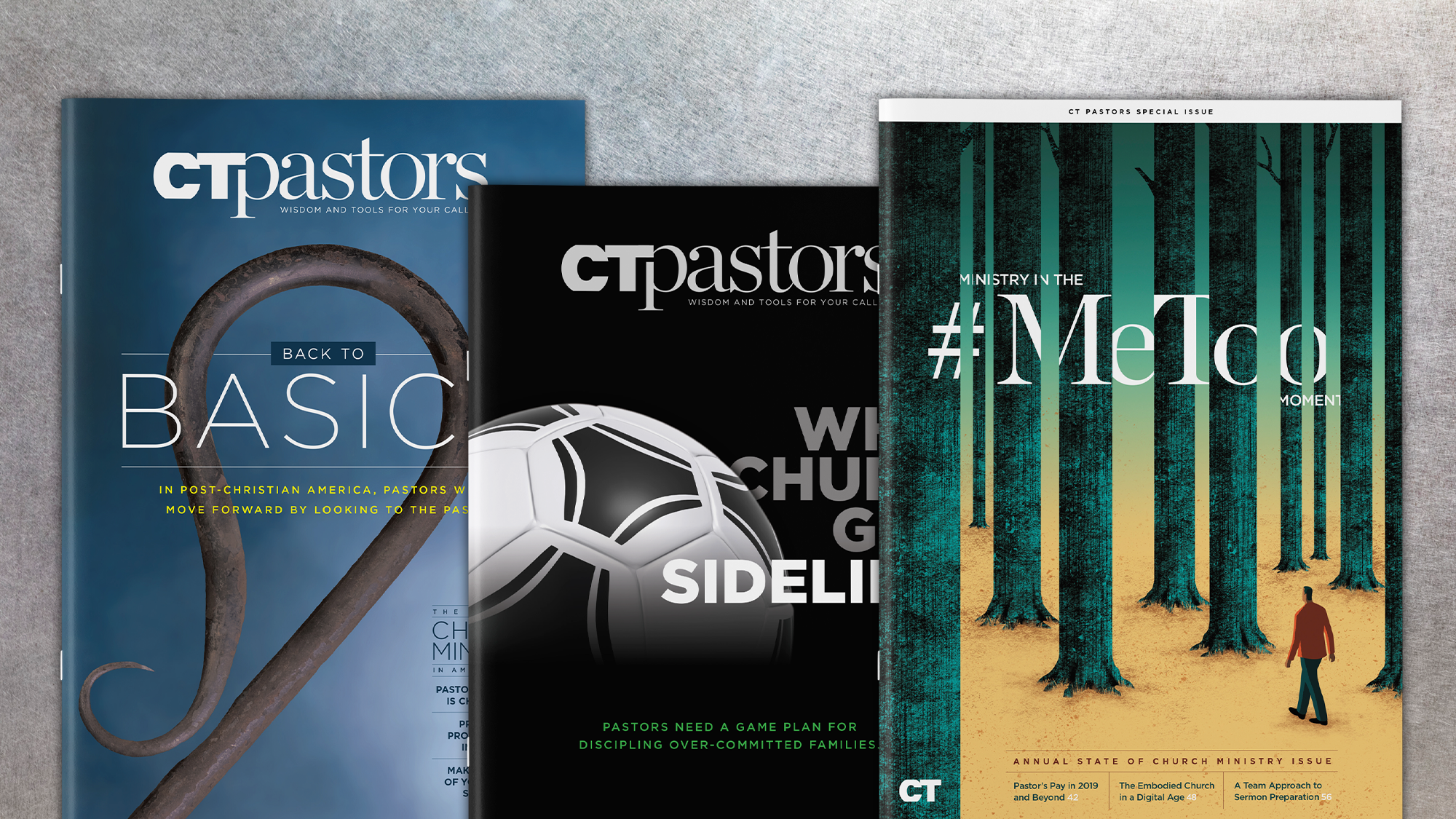
I recently had lunch with a local senior pastor for whom I was doing some coaching and consulting. He asked, “Greg, what are the most common things you see as a church secret shopper?” I’ve heard this question often enough to know what he was really asking: “Where do most churches miss the mark? How can I avoid those problem areas?” Instead of focusing on the negative, I decided to share the things that make me grin ear to ear when I visit churches for the first time. Here are six markers of especially welcoming churches.
1. They place the right people in hospitality.
When I drive up to a church, I love to see three things right away. First, I like to see a parking team member smiling and waving as I pull into the lot. Second, I look for parking team members spread throughout the parking lot (not bunched up and talking to one another), directing me to the third thing: guest parking. When I see clearly designated guest parking, I know the church expects and values guests.
Churches make the best first impression when a member of the parking team greets me as I exit my car. Recently, a parking team member introduced himself and said, “Let me walk you inside.” We made small talk and passed smiling greeters who said, “Good morning.” Then he walked me right up to the welcome center and introduced me to the woman working the desk. She gave me a welcome bag and asked if I had any questions. I asked her where the service would be held. She said, “I’d be glad to walk you over there.” When I secret shop a local church with my family, I love it when the person at the welcome center walks us over to the kids’ check-in. That is next-level service.
When I say I like to see the right people serving in hospitality, I mean the best and the brightest—people with good smiles and friendly personalities. This should go without saying, but based on my experience, I need to say it anyways: hospitality is not the best place for those who are socially awkward. This is a guest’s first impression of your campus. Hospitality shouldn’t be an afterthought; it’s a priority.
2. They communicate intentionally and strategically.
I appreciate churches that don’t assume people know things. I can tell right away if a church values newcomers, because I see they have already answered every possible question a guest could have. On the website, I love to see an “I’m New” button or a “What to Expect” page—helpful resources for potential first-time guests.
Churches that prioritize hospitality post clear and plentiful signage. Their signs use plain language, not insider jargon. People don’t know what “Refuge” or “The Rock” is; they’re looking for a sign that says, “Students.” They don’t know what the “Giraffes” or “Zebras” are, so stick with “Nursery” and “Preschool” instead.
When it comes to communication, less is more. I’m relieved—and I know guests are too—when I’m handed a bulletin that isn’t too busy, overwhelming, or filled with announcements. As Kem Meyer once said, “If everything is important, then nothing is.”
I also appreciate a worship experience that avoids announcements and instead points people to the church website for ways to get involved. If you can’t bring yourself to get rid of this part of the service, keep it short—one or two “next steps” at most—and ask someone other than the senior pastor to make the announcements, someone energetic with great stage presence. You might even shoot this segment as a video.
3. They take security seriously.
Every church should prioritize safety for the people gathered on their campus—especially children. I recently visited a local church with security team guys in black shirts scattered throughout their lobby and church campus. They each wore something I always look for: ear pieces. This is one of the best deterrents we have at our disposal. If someone up to no good sees a large person wearing a black security shirt and an ear piece, they will think twice before doing something stupid or harmful.
On a related note, I’m especially excited when I see CPR-trained men and women in red shirts representing the church’s medical response team. These people know where the defibrillators are and how to use them. I don’t see this often, but I am delighted when I do.
4. They have an efficient children’s check-in process.
I love to see volunteers ready, willing, and able to assist new families as they check in their kids. The average person off the street has never heard of your church’s database and check-in system, so whatever you can do to ease their nervousness and frustration will go a long way.
If you have enough volunteers, consider creating a dedicated first-time guest check-in station, clearly marked and manned by a team member who can walk parents step-by-step through the check-in process. The first time is always the most tedious, so encourage them that the next time will be easier. This is a wonderful way to show hospitality and remove barriers of intimidation and fear for guests.
5. They think through the response after the sermon.
Now, I’ll say up front that this is a personal and touchy subject. When I consult with a church, I always say, “Do what God says, not what Greg says.” That being said, I’m going to share with you what I’ve seen work well.
Very few churches can do a true altar call without killing morale and momentum. I have been to very large churches with thousands in attendance. When they do an altar call, about five to ten people come down. That’s wonderful. However, that’s a small percentage of those in attendance.
On the other hand, I’ve also done church secret shopper consultations for smaller churches, and when they do an altar call it’s the most awkward thing in the world. They sing a depressing song, and no one—and I mean no one—comes forward. When a crowd is smaller, it’s more likely people will feel shy or embarrassed. But do they have to feel that way?
Trust me, I get it. I grew up in a traditional Southern Baptist church that did an altar call every Sunday. I know how ingrained it is in the rhythms of many churches. But I think it’s worth asking, “Is there a better way to achieve the same results?” I think so.
I love to see a church communicate to guests that they have a Newcomer Connection (a first step) or a New Member’s Class (a big step) coming up. This is my preferred approach. In a new member’s class, attendees hear the vision, values, and beliefs of the church, meet the leadership team, and hear the pastor’s heart for reaching their community and the world. When I hear that vision communicated, I say, “Sign me up! That’s something I want to be a part of.”
Newcomers who complete this kind of process will be better members—not just people who walked an aisle, but people who learned about the church’s mission. When they fully understand their role and how God equipped them with gifts for the body of Christ, they can become co-owners of the vision. They can enter into the church’s discipleship process. I’m always thrilled when I come across a church that implements this well and gets a terrific response from the congregation.
6. They are intentional about following up with guests.
The churches I’ve seen retain the most guests have a simple and clearly defined discipleship process. It’s all about helping people take next steps. Churches that do this with excellence don’t overwhelm people with complexity. (The book Simple Church by Thom Rainer and Eric Geiger goes deep into this issue.) I firmly believe that you can accomplish more by doing less.
I encourage you to read the book Fusion by Nelson Searcy with Jennifer Dykes Henson. It helped me understand this point. If you are strategic and intentional about your assimilation process, you will go a long ways toward closing the back door of your church.
Do what God says, not Greg.
I know you love Jesus. I know you love your church. If you’re anything like most leaders, you are not anti-growth. But until you consider making strategic changes to your typical Sunday service—including your online presence and your assimilation process—growth may always elude you.
Again, don’t do what Greg says. Do what God says. But if I haven’t contradicted Scripture, I encourage you to pray about making some of these key changes. They might be a different methodology than you’re used to, but I’ve witnessed amazing results from churches all over the country that stick to these principles.
For more lessonsGreg has learned about reaching and keeping church guests, check out his new book, Secrets of a Secret Shopper.
Greg Atkinson is a church secret shopper and the founder of Worship Impressions. He is also the author of Church Leadership Essentials, Strange Leadership, and Secrets of a Secret Shopper.

Support Our Work
Subscribe to CT for less than $4.25/month


























